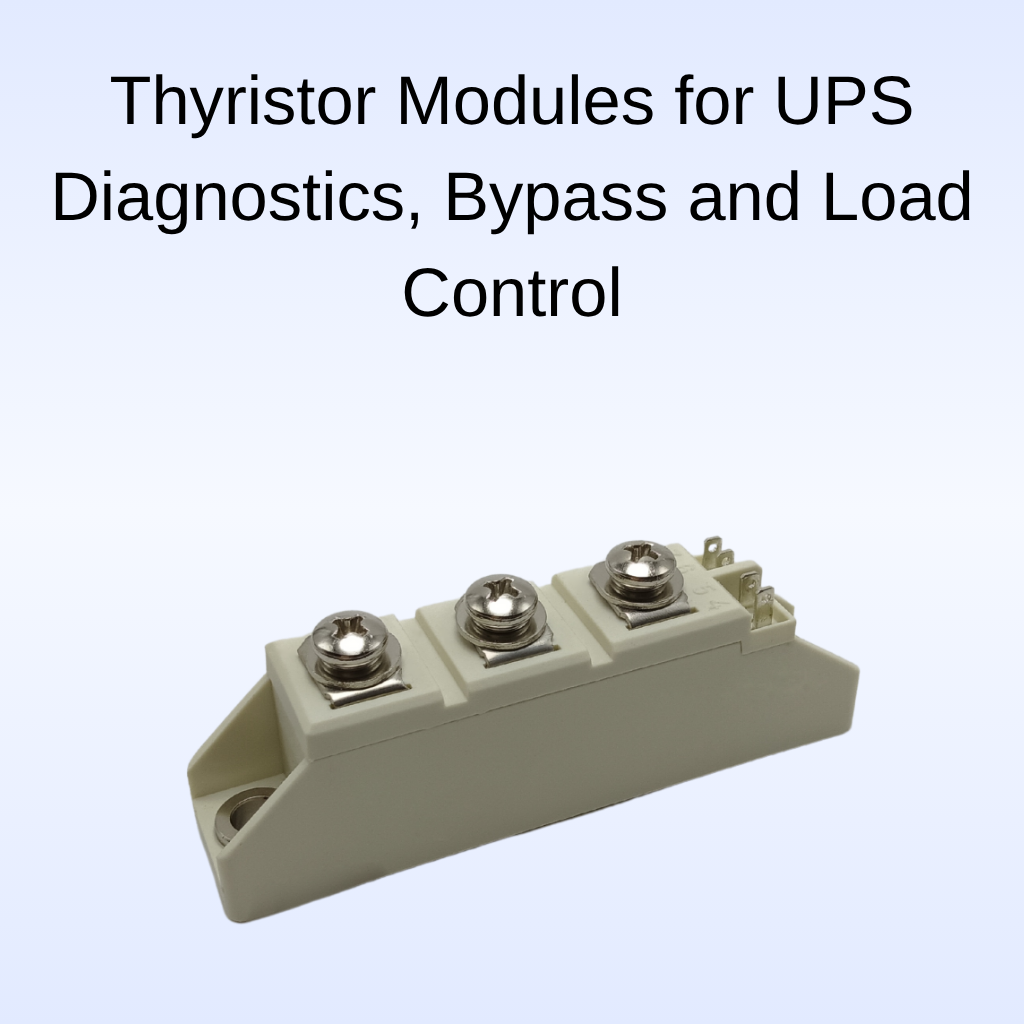1. Introduction: Elevating UPS Capabilities with Advanced Thyristor Modules
In modern power ecosystems, UPS systems need to do more than simply supply backup power — they must support energy efficiency, integration with generation assets, and dynamic load management. Thyristor modules engineered for ultra low VT desalination smart grid High surge current low on‑state voltage industrial phase control dual thyristor module improve conduction efficiency and enable precise grid interaction. For battery-based systems, soft-start battery charger temperature control High surge current low on‑state voltage industrial phase control dual thyristor module versions safeguard both the charger and storage during startup. When UPS is tied into HVDC or hybrid systems, HVDC power factor diming High surge current low on‑state voltage industrial phase control dual thyristor module modules provide advanced control over power factor and load shaping. In this article, we’ll explore additional roles: inverter bypass, overload mitigation, peak shaving, and system diagnostics.
2. Inverter Bypass & Maintenance Modes
2.1 Efficient Bypass During Servicing
During maintenance or failure, the UPS inverter often transitions clients to a bypass path. If the bypass uses a ultra low VT desalination smart grid High surge current low on‑state voltage industrial phase control dual thyristor module in its conduction leg, it ensures minimal voltage drop and high efficiency even when acting as a direct conduction route. This preserves system performance during fallback.
2.2 Smooth Bypass Switching
Switching to bypass mode introduces transients. A soft-start battery charger temperature control High surge current low on‑state voltage industrial phase control dual thyristor module can provide a gradual ramp when bridging to bypass, avoiding sudden inrush or destabilizing voltage swings. Its thermal feedback features help manage transient heating during this quick transition.
2.3 Adaptive Phase Alignment
By using HVDC power factor diming High surge current low on‑state voltage industrial phase control dual thyristor module in the switch control, the system can adjust phase timing to align with the grid during bypass transitions—minimizing disturbance and ensuring smoother switching behavior.
3. Overload Handling & Peak Management
3.1 Temporary Overload Paths
UPS systems sometimes face short-term overloads. Thyristor modules with ultra low VT desalination smart grid High surge current low on‑state voltage industrial phase control dual thyristor module design can accept higher currents momentarily, thanks to their low conduction drop and robust thermal handling. This permits brief overloads without incurring large losses or thermal damage.
3.2 Controlled Load Reduction
When capacity is exceeded, the UPS may shed noncritical loads or throttle output. A soft-start battery charger temperature control High surge current low on‑state voltage industrial phase control dual thyristor module can moderate the load shedding transitions, ramping down power carefully to prevent jolts in connected equipment.
3.3 Active Peak Sharpening
Systems tied to demand charges can shave peaks by modulating load draw. HVDC power factor diming High surge current low on‑state voltage industrial phase control dual thyristor module modules can dynamically adjust current phase and amplitude to shape power usage within limits, providing a “soft” peak management function.
4. System Monitoring & Fault Diagnostics
4.1 Temperature and Stress Feedback
Modules with ultra low VT desalination smart grid High surge current low on‑state voltage industrial phase control dual thyristor module often integrate sensors to monitor internal stress, temperature, and conduction health. Data from these monitors helps the UPS controller predict failures or initiate load shifts.
4.2 Smart Charger Health Tracking
In battery sub‑systems, soft-start battery charger temperature control High surge current low on‑state voltage industrial phase control dual thyristor module modules can monitor charging dynamics, temperature gradients, and transient behavior, feeding diagnostic information to maintenance systems and smoothing anomalies.
4.3 Fault Adaptive Behavior
With HVDC power factor diming High surge current low on‑state voltage industrial phase control dual thyristor module capabilities, modules can adapt their phase control behavior in fault conditions—retarding conduction, limiting sudden currents, or changing phase angles to reduce stress until the fault is cleared.
5. Deployment Insights & Best Practices
Thermal Management is Key
Even with low VT, sustained high currents generate heat. Ensure module mounting, heatsinks, and airflow are designed to match the capability of your ultra low VT desalination smart grid High surge current low on‑state voltage industrial phase control dual thyristor module module.Graceful Ramping Over “Instant Switches”
Using soft-start battery charger temperature control High surge current low on‑state voltage industrial phase control dual thyristor module behavior in transitions—whether bypass, charger start, or load shift—reduces stress on wiring, contactors, and connected loads.Phase Control Planning
Leverage HVDC power factor diming High surge current low on‑state voltage industrial phase control dual thyristor module features only where upstream systems (grid or HVDC links) support adaptive phase modulation. Otherwise, default to simpler conduction.Modular Redundancy Strategy
Design the UPS such that multiple thyristor modules (of these variants) can operate in parallel or standby, allowing fault-insulating or load sharing with minimal impact.
Summary & Next Step
This third article illustrates advanced roles for thyristor modules in UPS beyond just switching—covering bypass, overload handling, diagnostics, and load shaping—while leveraging ultra low VT, soft-start battery charger, and HVDC diming modules.
READ MORE:
A Deep Dive into Selecting Thyristor Modules for UPS Applications
Key Considerations When Selecting Thyristor Modules for UPS Systems
How to Choose the Right Thyristor Modules for UPS Applications: A Comprehensive Guide
How to Choose the Right Thyristor Modules for UPS Applications
Smart Thyristor Modules for UPS Prognostics and Load Shaping
Thyristor Modules in UPS: Fault Isolation and Ride-Through Support
Mission-Critical and Specialty Use Cases of Thyristor Modules

